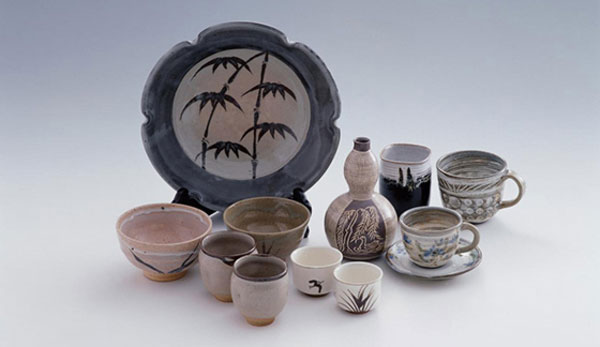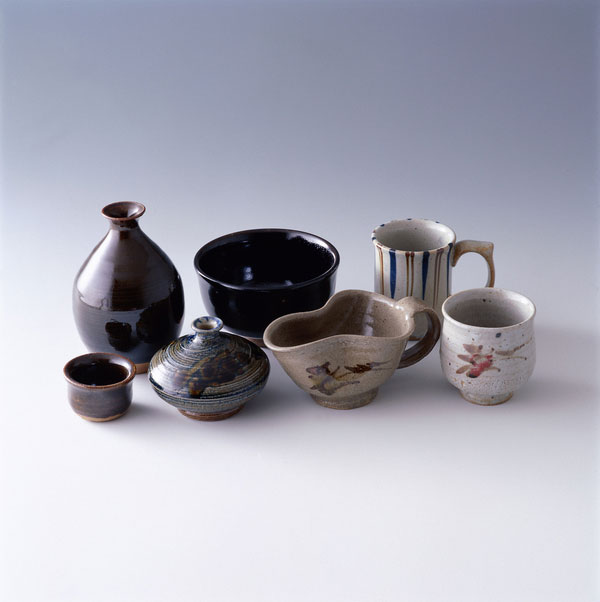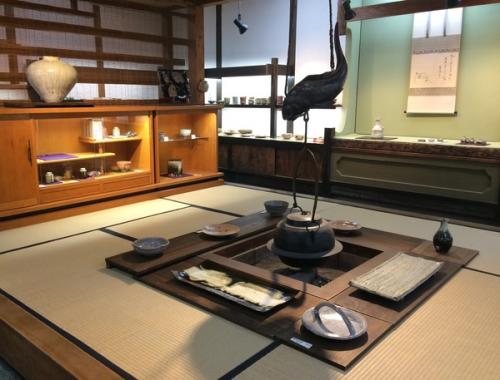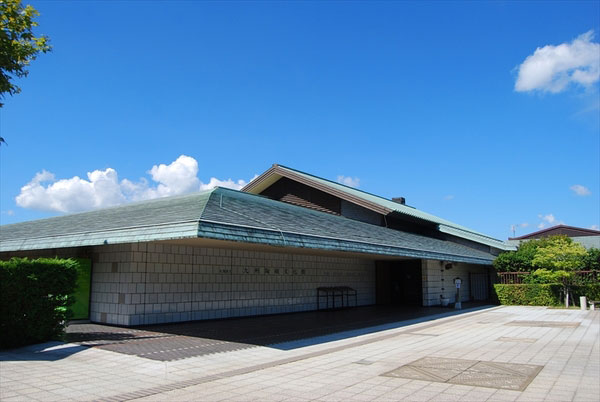 Reprinted by "KyushuTabi Net" Photo Gallery
Reprinted by "KyushuTabi Net" Photo Gallery
- Ceramic
- Saga
Karatsu ware Karatsu yaki
Fill these potteries with flowers or food
To fulfill their duty and complete your soul
Description
What is Karatsu ware ?
Karatsu ware (called Karatsu yaki) is a form of porcelain produced in the Saga and Nagasaki prefectures. This traditional craft has been produced since the 16th century in various forms, including tea bowls. One of the most notable features of Karatsu ware is the way it retains the feel of the clay in an uncomplicated manner, but without looking too coarse. During the Azuchi-Momoyama period (1573-1600), Karatsu ware was treasured for its tea vessels, which were famously used in ceremonies along with Raku ware and Hagi ware, produced in Kyoto and Yamaguchi respectively. Both Raku ware and Hagi ware are more recent forms of pottery than Karatsu ware as they have a history of around 400 years. Karatsu ware fits well in the traditional concept of wabi-sabi* as it has an imperfect, impermanent and incomplete simple beauty. The preference in tea ceremonies for a feeling of simple depth is well represented with Karatsu ware, although there are many other types of pieces than tea bowls. Designs such as flowers, birds and trees are drawn on a certain type of Karatsu ware called e-karatsu (literally, "picture Karatsu"). Chosen Karatsu yaki or Korean Karatsu, which is said to have been brought from the Joseon dynasty (1392-1897) is also popular for its attractive combination of black iron glaze and white straw ash glaze. Various other styles also exist, like speckled Karatsu which has speckles on the surface.
*Wabi-sabi are two key aesthetic concepts of wabi or rustic beauty, both manmade and in nature, and sabi or change, making things more valuable.
History

Karatsu ware is said to have first been produced by Korean artisans around the year 1592, when Hideyoshi TOYOTOMI took part in the Japanese invasions of Korea (1592-1598). However, recent research suggest an alternative theory that Karatsu ware was first created around the year 1580. Initially Karatsu ware was used as tableware for daily use, but as the simple beauty and sense of wabi-sabi (see top parapraph) inherent in Karatsu ware became more and more popular, it gradually came to be used for tea ceremonies as well. During the Azuchi-Momoyama period (end of the 16th century) Karatsu ware came to be known as a tea ceremony product to such an extent that in Western Japan, "Karatsu ware" was synonymous with "porcelain". However, from the Edo period (1603-1868) onward, the mountains were ruined because of an overabundance of kiln sites and the Saga domain started to shut them down. As the Saga domain demolished the crowded kilns and concentrated the kilns in Arita, a nearby pottery town, the number of Karatsu ware kilns decreased. During the Meiji period (1868-1912), the number of Karatsu ware kilns continued to decrease, but the craft was brought back by Muan NAKAZATO (1895-1985), an artist with the title of Living National Treasure.
General Production Process
- 1. Mining the potter's clay The appeal of Karatsu ware is that the characteristics of the clay appear in the finished piece, to such an extent that it is said that the quality of a piece is decided by the clay. Therefore, the first and most important step is to find and mine clay that is suitable for the desired style. The mined clay is first shaved with a sickle. After the clay has been piled into a mountainous shape, a hammer called a donjii is used to remove any unevenness or roughness. By doing these steps carefully, the earthenware itself will have a superior quality finish.
- 2. Pressing the clay The clay is mixed with water and treaded on. Once it is disk-shaped, the clay is cut and treaded on again. Since it takes time to master the skill of knowing when the clay is ready, this process is contingent on the intuition and experience of the artisan. The clay is repeatedly pressed and modified based on the artisan's intuition before being divided into spheres ready for shaping.
- 3. Kneading the clay
This process is about carefully kneading the clay to remove air bubbles because kneading properly produces an even texture.
The kneaded clay is molded into the shape of a shell.
- 4. Shaping There are various methods of shaping, but the most common one is using a potter's wheel. This is also known as "water turning" because hands can be smoothly applied to a potter's wheel when wet. Electric potter's wheels are also used, and in the old days, the traditional kick potter's wheels were used as well. Another technique used is tataki or "striking" and involves turning the clay into a tall cylindrical form, placing wood on the inside of the cylinder, and striking it from the outside. There are other techniques, but the important thing is that the shaping methods suitable for each particular form of earthenware are used. Once the shaping has been completed, the feet are cut and the pieces are dried naturally.
- 5. Decoration Decoration is carried out using traditional techniques like engraving, comb patterning, and brush mark patterning. Bisque firing (an initial firing done at a low temperature before any glaze is applied) is sometimes done before decorating.
- 6. Painting The main tools used for painting are writing and painting brushes, but some artisans also draw with their fingers or bamboo. In this process, as vessels that don't have flat surfaces are painted onto directly, it is difficult to apply designs exactly as intended plus there is no opportunity for retouching. Therefore, this work requires a lot of experience and dexterity. Once painted, the pieces are glazed and dried.
- 7. Glost firing This is the final process of making Karatsu ware. The pieces are loaded into the kiln and fired. Once the firing begins, the pieces are baked at a high temperature of around 1250 to 1300℃ (about 2282 to 2372℉). Concentration and skills are required, as the firing process has a large influence on the texture of the finished pieces.
Leading Ateliers
Kyozan-gama atelier

Fill these potteries with flowers or food To fulfill their duty and complete your soul
-
Founded1969
-
ClosedOpen all year long except around the New Year
-
DirectorKimiyuki INOUE
-
Business HoursExhibit: 9.30am to 5.30pm
Atelier: 9am to 5pm -
Address
-
Website
-
Tel.+81-955-77-2131
Where to Buy & More Information
Kyushu Ceramic Museum
 Photo:Saga Prefectural Tourism Federation
Photo:Saga Prefectural Tourism Federation
-
Address
-
Tel.+81-955-43-3681
-
ClosedMondays (open if Monday is a holiday), around the New Year
-
Business Hours9am to 5pm
-
Website
See more Ceramic
- Imari ware/Arita ware
- Hasami ware
- Kutani ware
- Mashiko ware
- Shigaraki ware
- Bizen ware
- Hagi ware
- Koishiwara ware
- Mino ware
- Tobe ware
- Tokoname ware
- Karatsu ware
- Kasama ware
- Satsuma ware
- Iga ware
- Mikawachi ware
- Agano ware
- Otani ware
- Obori-soma ware
- Tsuboya ware
- Aizu-hongo ware
- Shodai ware
- Echizen ware
- Akazu ware
- Tamba-tachikui ware
- Yokkaichi-banko ware
- Izushi ware
- Kyo ware/Kiyomizu ware
- Iwami ware
- Amakusa ceramics
- Seto-sometsuke ware
- Sanshu Onigawara Crafts































































































































































































































































































